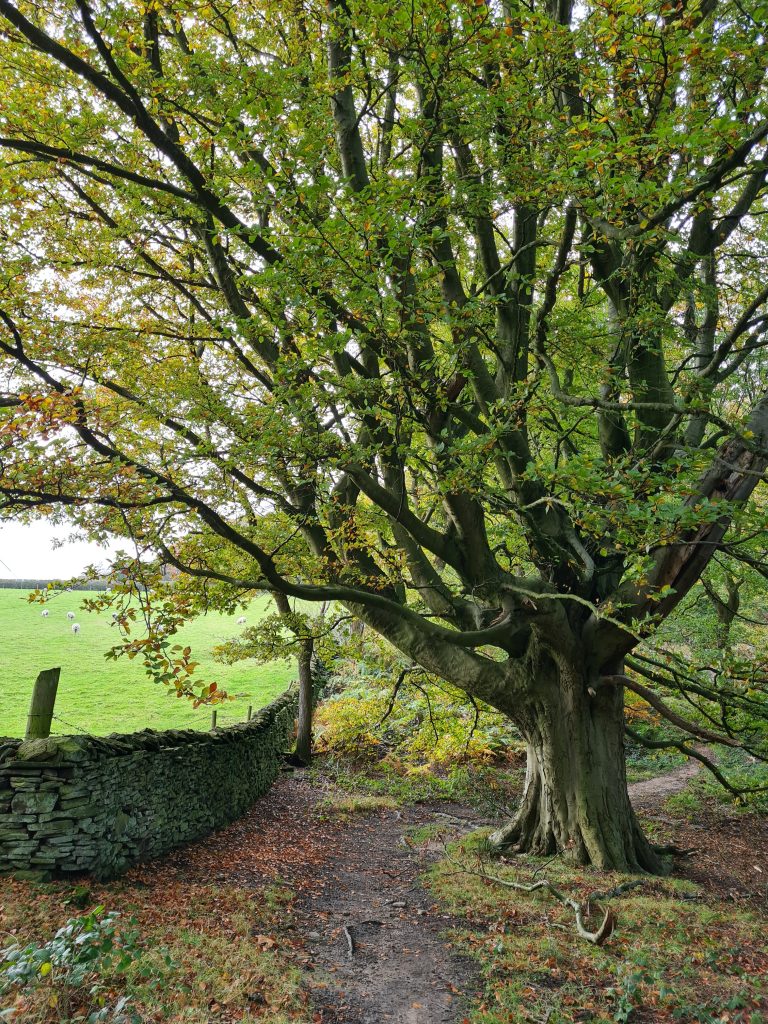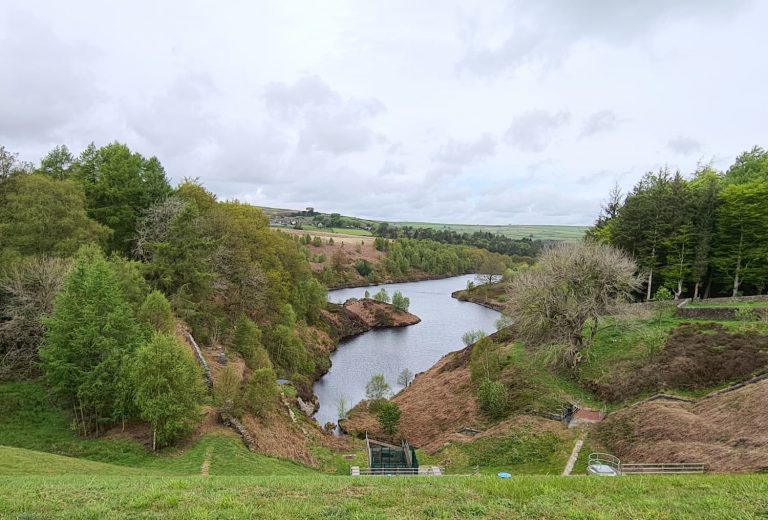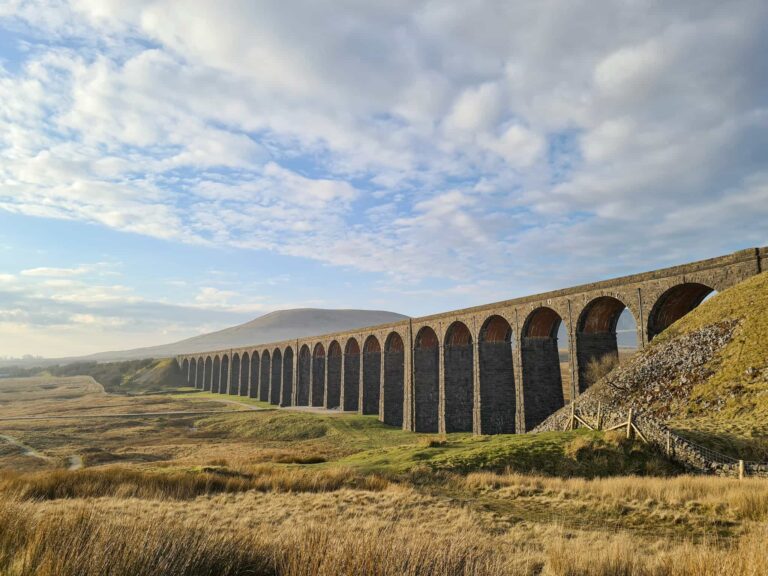Bretton Park Circular Walk | 3 Miles
This is a short walk with lots to see, as you’d expect from the home of the Yorkshire Sculpture Park! This Bretton Park circular walk takes in some of the historical parts of the park, including some hidden gems you might not know about in the 18th Century parkland. At just over 3 miles, it’s perfect for a sunny morning walk.
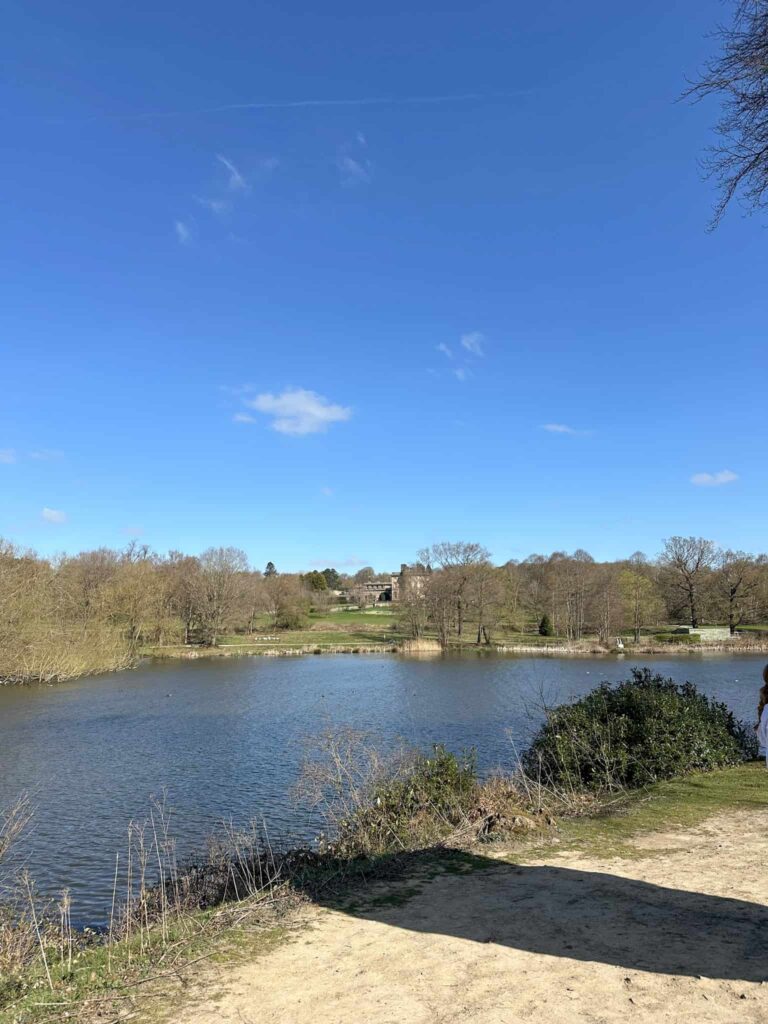
You need to book to visit Yorkshire Sculpture Park – book your tickets here.
Parking is in the Yorkshire Sculpture Park car park which is free, but you need a ticket to enter the park itself which cost £9.50 per adult. Kids under 18 are free. It used to be that y0u paid per car for parking and entry to the park was free, but now it’s per person unfortunately. There may be nearby free parking outside of the park itself but I’m not sure where.
We set out from the car and went through the YSP main building. Here there are toilets and a cafe. We went out through the big glass doors into the gardens and then down the steps into the parkland.
We walked down the road, and then headed off along a track which leads to another car park. Turning left before you get to the car park, you can walk to the Camelia House, a Grade II listed building built in around 1817 to house some stunning camelias. Some of these plants date back to the 1820s, and still flower every year. Sadly it was closed on this visit but I’ve been in before and it is beautiful.
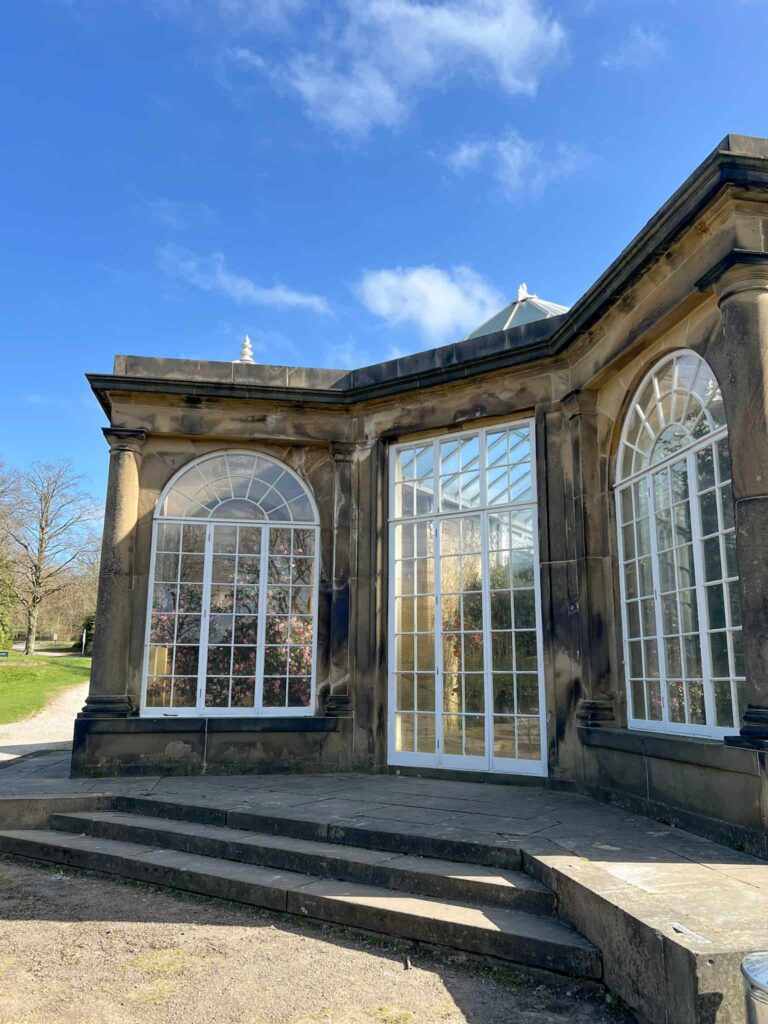
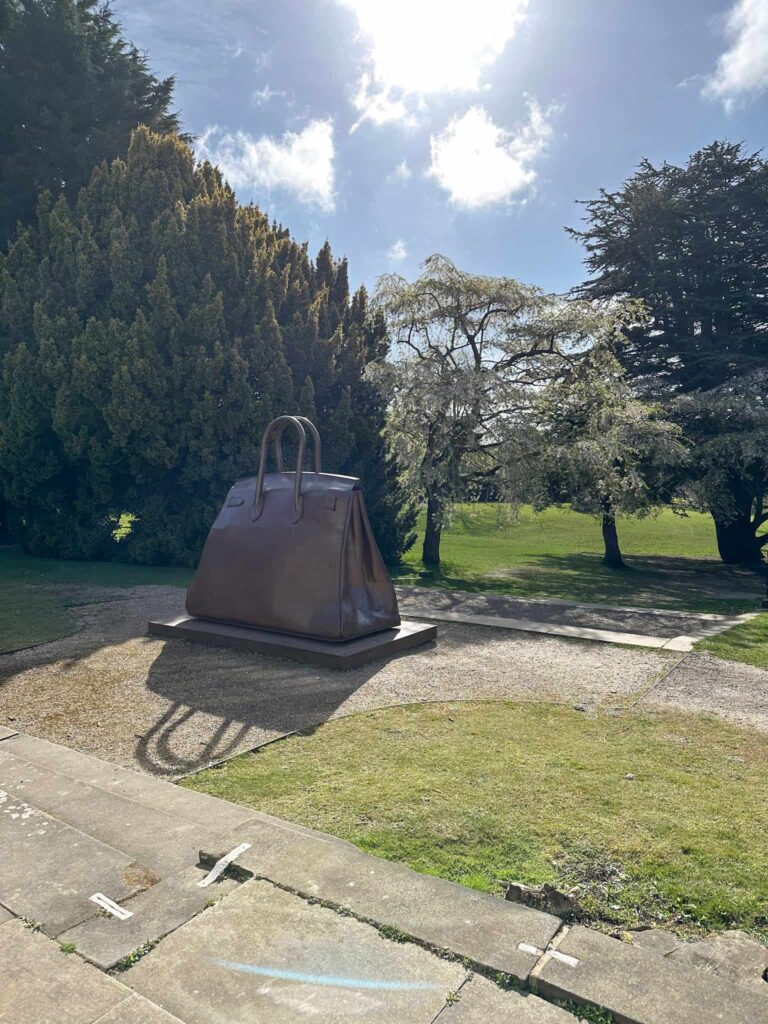
From the Camelia House we headed off past a huge domed arbour and into the woods a short distance, walking past a blocky outdoor kitchen sculpture and then a bronze sculpture of a rabbit eared figure in a dress down to the main track. We headed off into the woods, following the woodland trail to the Greek Temple, built by Diana Beaumont in the early 19th Century as a place for the family to enjoy picnics and musical performances. It has a stunning view of the lake.
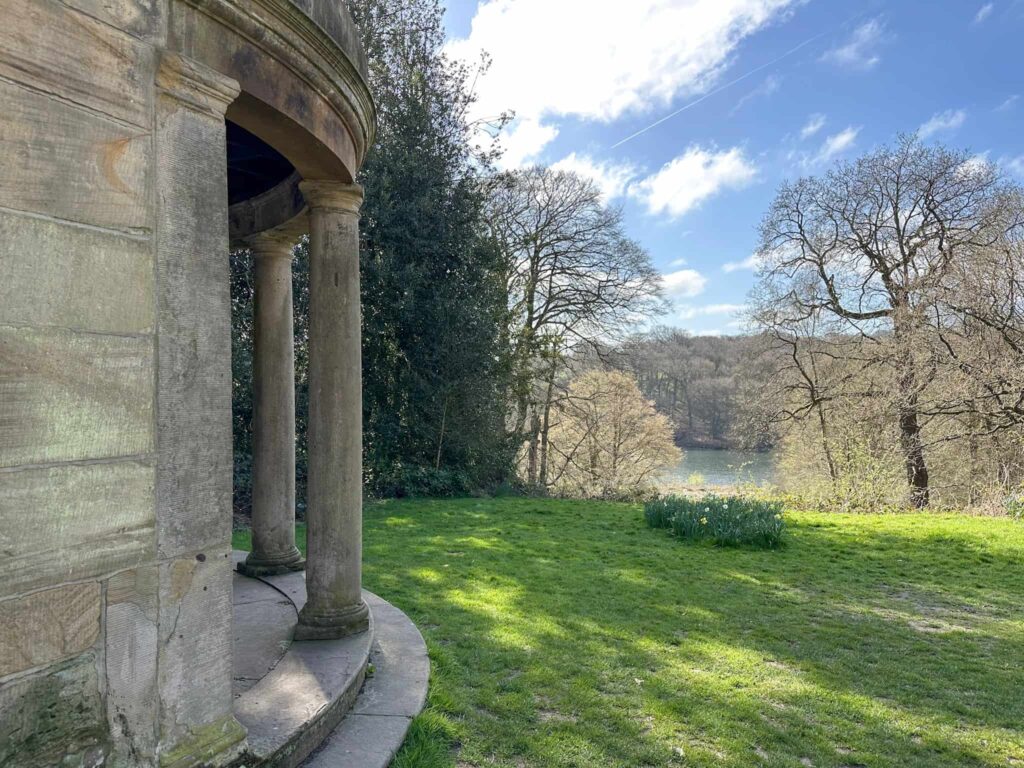
Continuing along the woodland path which then turns left, the route passes a stone obelisk which mark the site of the original Bretton Hall. The current Bretton Hall was built in 1720 as a replacement after a fire.
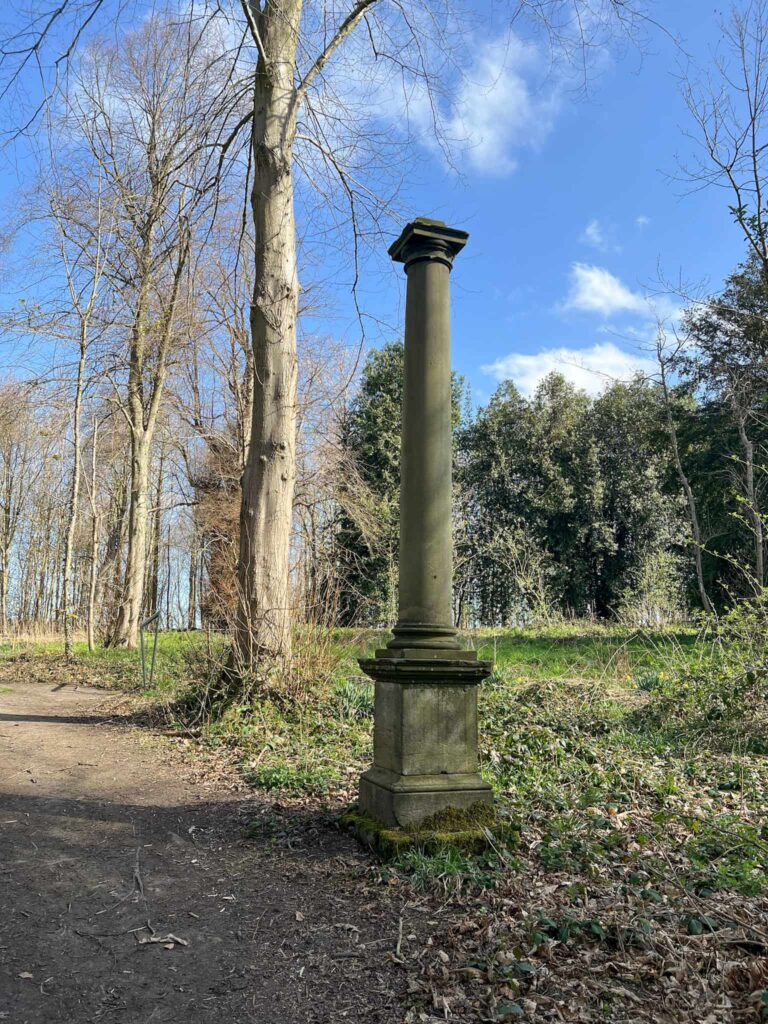
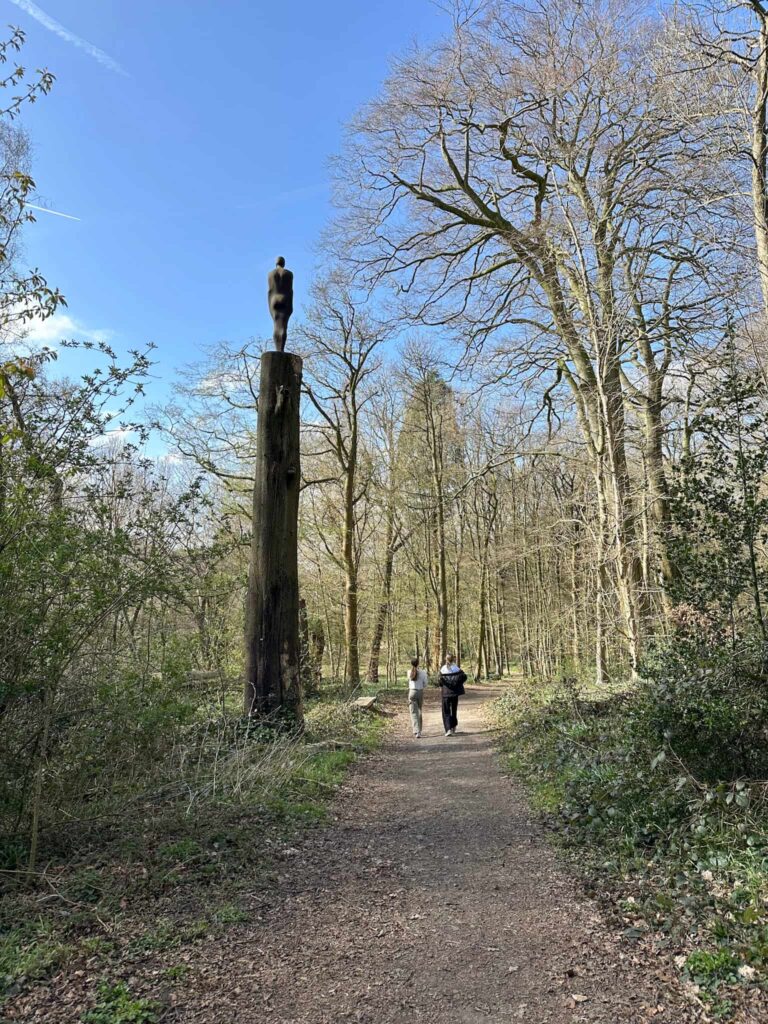
The path leads down to the Cut, the manmade canal built to manage water levels in the lakes, and over the bridge and into the woodland. Here it passes by a curious structure, the Boat House, which is all but marooned now due to a build up of silt cutting it off from Upper Lake.
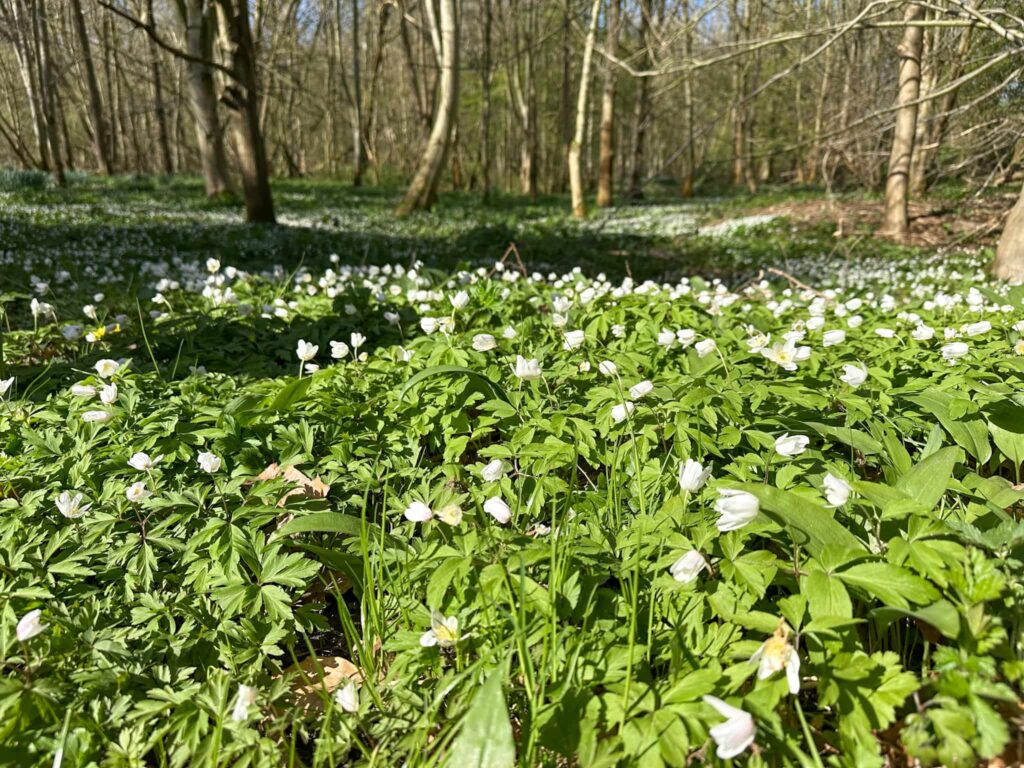
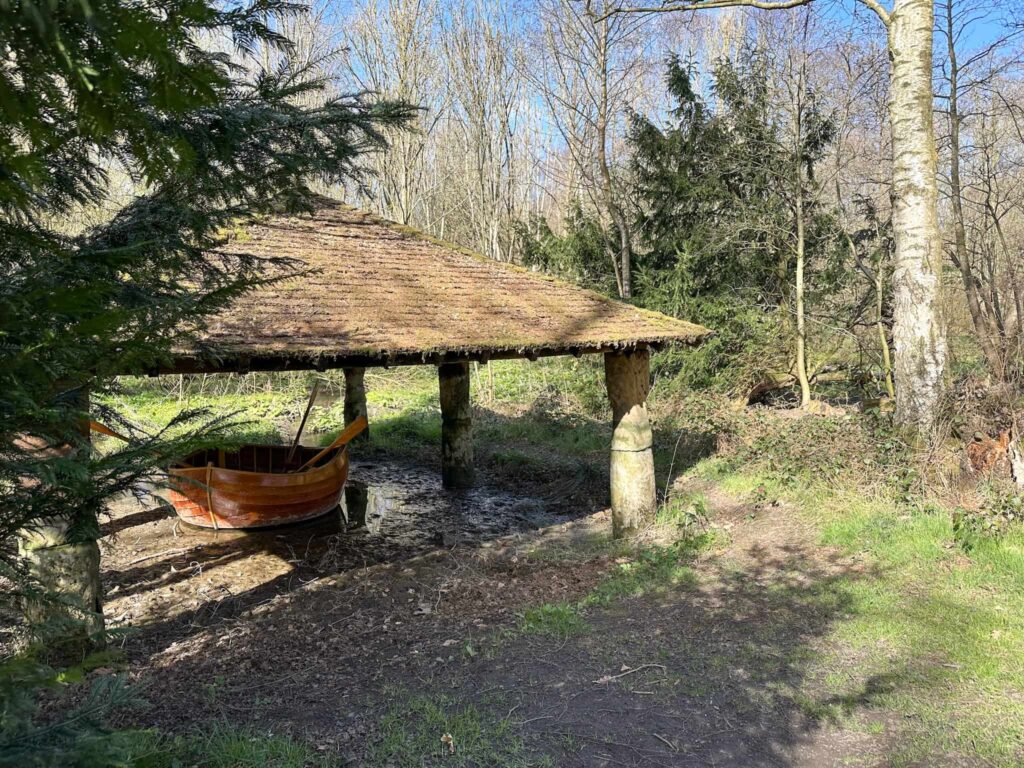
The path is a gently undulating woodland trail which winds its way around the edge of the lake to the Shell Grotto, a small building which sadly only has traces of shells left but the kids will love to explore it.
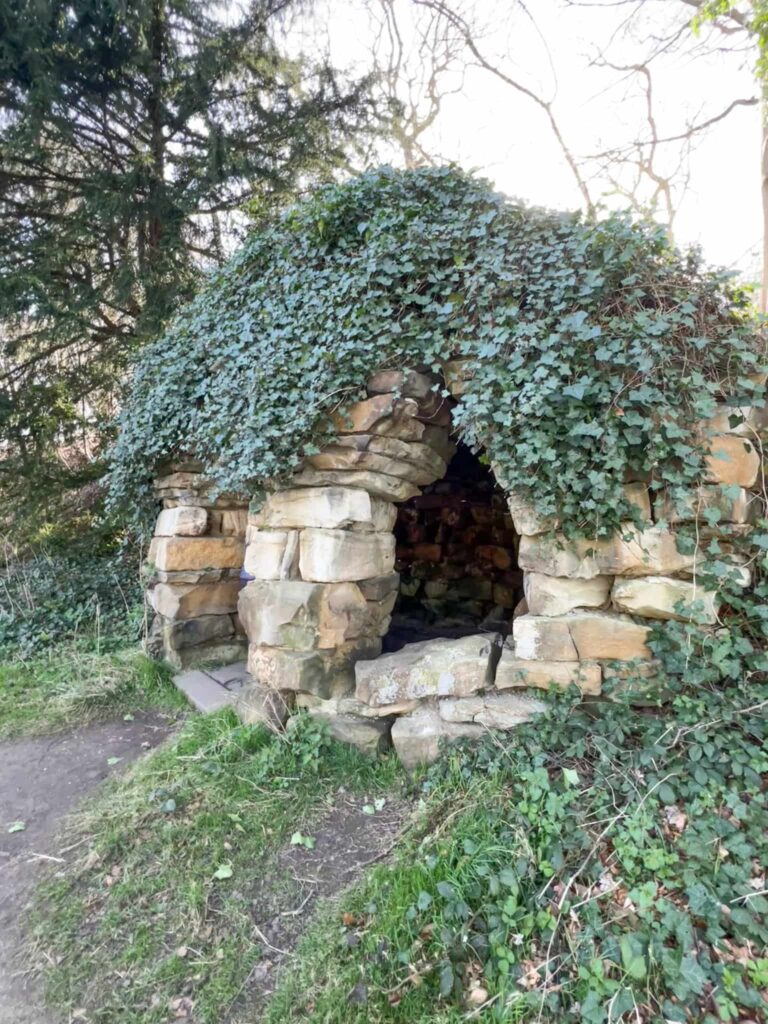
From the Shell Grotto we continued along, crossing the path which runs over Cascade Bridge and heading back into the woods on the other side. After a short distance there are some stepping stones you can walk over (they were closed on our visit unfortunately) and stunning views of the house and parkland across the lake.
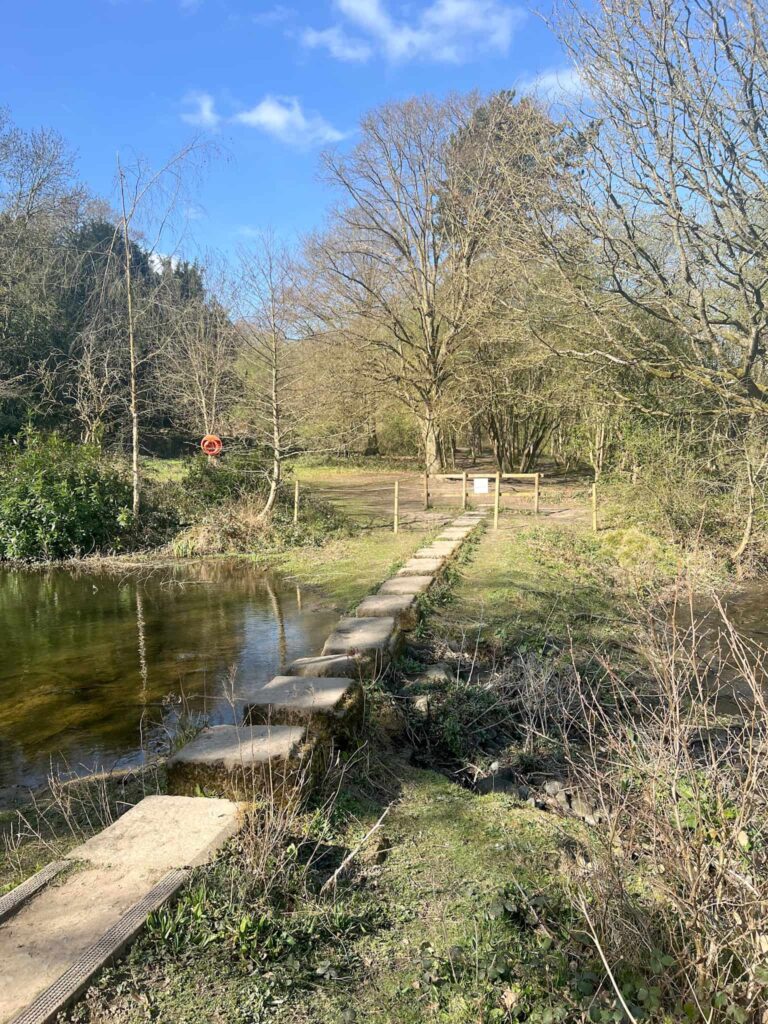
We then reached Lady Eglinton’s Well, a well contained with an elaborate stone surround. The well was dry when we visited but the water would have flowed out into the small pool at the front. This used to be one of the water sources for the local people who lived in and around the Estate.
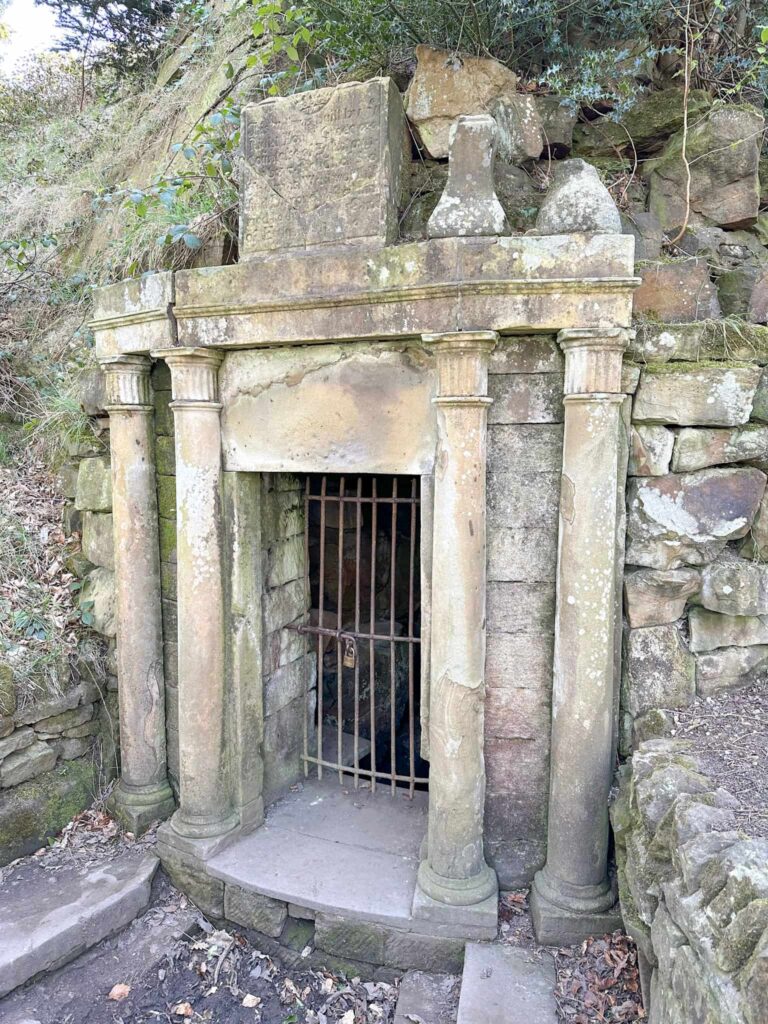
From the well we turned left onto the path over the weirs and headed up into the country park via an ornate stone bridge. Again we turned left and followed the path which gently climbs the hillside back to the YSP building, but then had a detour off to the Chapel. This Chapel used to be the chapel for the family who lived at Bretton Hall but now houses various artworks, including a stunning wicker display “Into Being” by Laura Ellen Bacon.
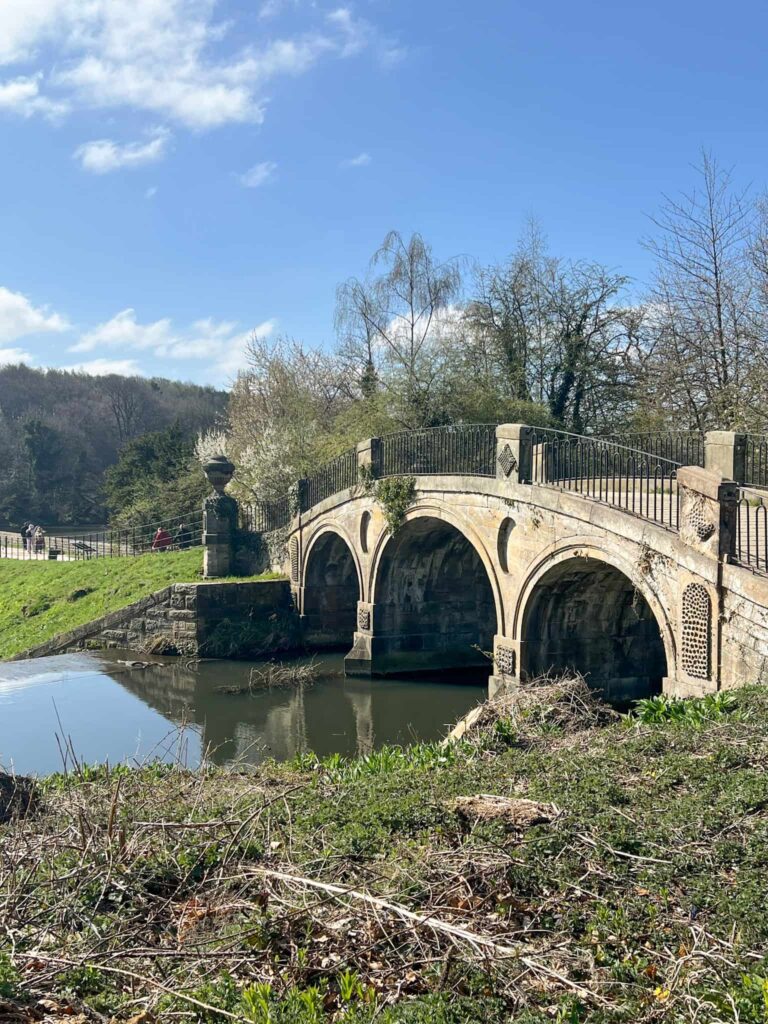
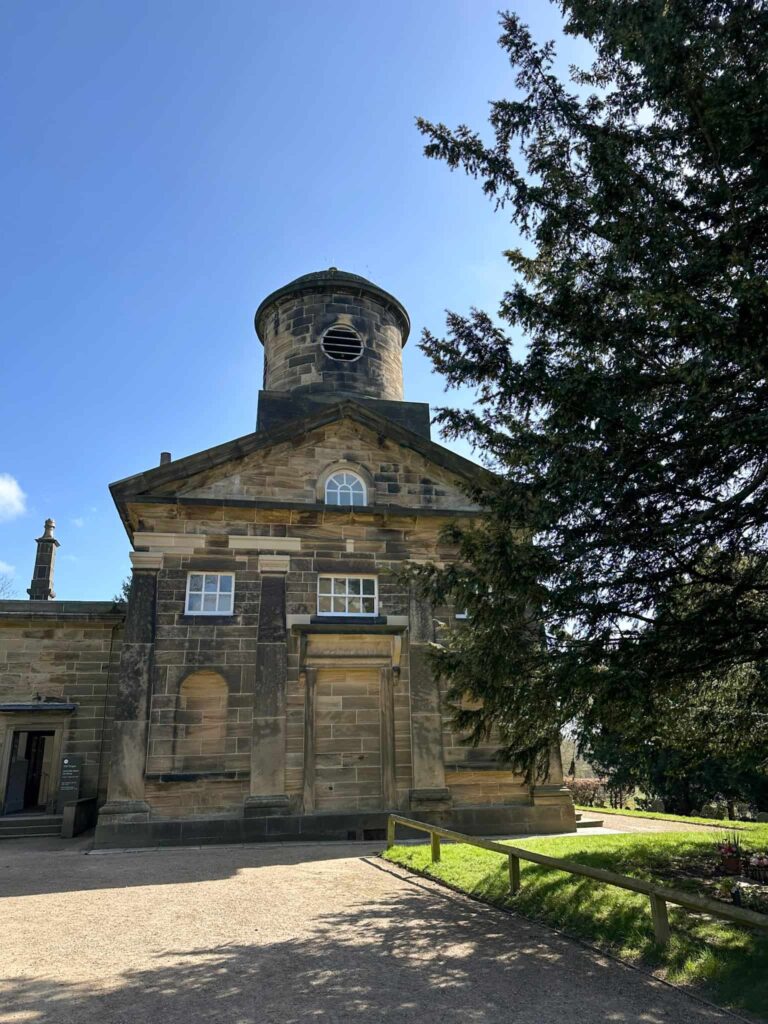
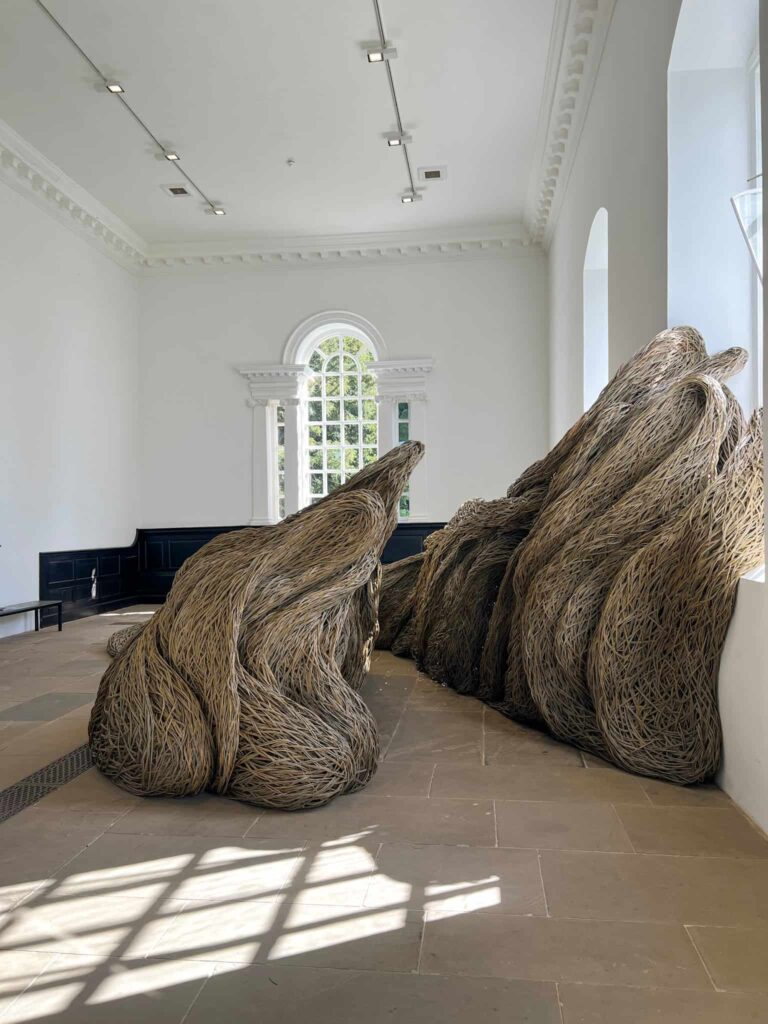
From the Chapel we headed back up to the YSP building, had some lunch in the cafe and then headed home.
Bretton Park Circular Walk Map:
Walk Map (Opens in OS Maps): Bretton Park Circular Walk
Parking: Yorkshire Sculpture Park, West Bretton WF4 4JX W3W:///showering.ladders.dusters
Facilities: There are public toilets, cafe and gift shop in the Yorkshire Sculpture Park main building.
Walk Time: 2-3 hours
Difficulty: ▲
Distance: 3.3 miles (5km)

